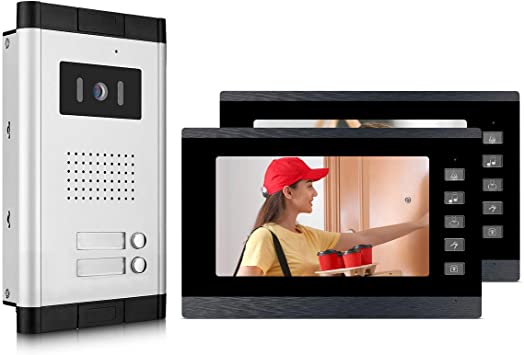In an increasingly interconnected world, security and communication technologies have evolved dramatically. Among these advancements, video intercom systems have undergone significant transformations. These systems, once considered a luxury, are now essential in residential and commercial settings. This blog delves into the evolution of video intercom systems, from their humble analog beginnings to the sophisticated digital systems we rely on today.
The Analog Era: The Birth of Video Intercom Systems
Video intercom systems emerged in the mid-20th century as an extension of audio intercoms. Early analog video intercom systems were rudimentary, consisting of basic video cameras and monitors connected via coaxial cables. These systems provided a visual component to the audio communication, enhancing security by allowing occupants to see who was at their door before granting access.
The primary components of analog video intercom systems included:
- Cameras: Simple, often monochrome, and low-resolution, these cameras were mounted at entry points.
- Monitors: Bulky CRT monitors displayed the video feed.
- Cabling: Extensive coaxial cabling was necessary to connect cameras to monitors.
Despite their limitations, these early systems represented a significant leap forward in security technology. They were primarily used in high-end residential properties and commercial buildings, where the need for enhanced security justified the cost.
Transition to Digital: The Dawn of a New Era
The advent of digital technology in the late 20th century revolutionized video intercom systems. Digital systems offered numerous advantages over their analog predecessors, including improved video quality, reduced cabling requirements, and greater integration capabilities.
Key advancements in digital video intercom systems included:
- Improved Video Quality: Digital cameras provided higher resolution images, often in color, enhancing the ability to identify visitors.
- Network Integration: Digital systems could integrate with existing network infrastructure, reducing the need for extensive cabling.
- Intercom Features: Enhanced audio and video communication, as well as additional features like remote access and recording capabilities.
The transition to digital made video intercom systems more accessible to a broader audience. Residential, commercial, and even industrial sectors began adopting these systems for their enhanced security and convenience.
The Rise of IP-Based Systems: Connectivity and Convenience
As digital technology continued to advance, the next significant evolution in video intercom systems came with the introduction of IP-based systems. These systems leveraged the power of the internet to provide even greater functionality and flexibility.
Key features of IP-based video intercom systems include:
- Remote Access: Users can access the intercom system from anywhere using smartphones, tablets, or computers. This feature is particularly valuable for homeowners and business owners who need to monitor their property while away.
- Integration with Smart Home Systems: IP-based systems can integrate seamlessly with other smart home devices, such as door locks, lighting, and security cameras, providing a comprehensive security solution.
- Scalability: These systems are easily expandable, allowing for the addition of more cameras, monitors, and other devices without extensive rewiring.
- Enhanced Security Features: Advanced encryption protocols ensure that communications are secure and protected from potential cyber threats.
The convenience and versatility of IP-based systems have made them the preferred choice for modern video intercom solutions. They offer not only security but also peace of mind, knowing that one’s property can be monitored and controlled from anywhere in the world.
The Future of Video Intercom Systems: AI and Beyond
The evolution of video intercom systems continues as we look toward the future. Emerging technologies like artificial intelligence (AI) and the Internet of Things (IoT) are poised to further transform these systems, making them smarter and more efficient.
Anticipated advancements include:
- AI-Powered Features: AI can enhance video intercom systems by providing features like facial recognition, behavioral analysis, and predictive analytics. These capabilities can improve security by identifying potential threats before they become incidents.
- Voice Assistants: Integration with voice assistants like Amazon Alexa and Google Assistant will allow for hands-free operation and more intuitive control of intercom systems.
- Advanced Analytics: Enhanced data analytics will provide users with detailed insights into visitor patterns and security incidents, enabling more informed decision-making.
- IoT Integration: As more devices become interconnected, video intercom systems will play a central role in smart home ecosystems, coordinating with other devices to create a cohesive security and automation network.
Conclusion
The evolution of video intercom systems from analog to digital and beyond demonstrates the remarkable advancements in security and communication technologies. Today’s systems offer unparalleled convenience, security, and integration capabilities, making them an essential component of modern residential and commercial security solutions.
As we continue to embrace new technologies, video intercom systems will undoubtedly become even more sophisticated, providing smarter, more efficient ways to protect our homes and businesses. Whether you’re looking to upgrade an existing system or install a new one, understanding the evolution and future potential of video intercom systems can help you make an informed decision that meets your security needs.




